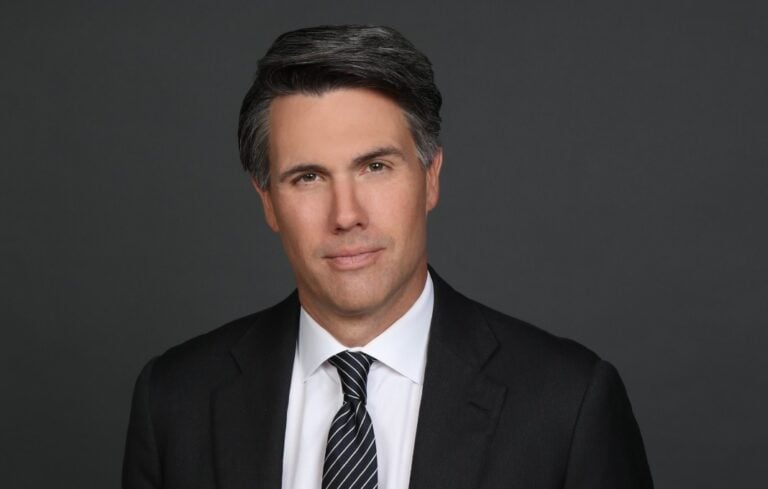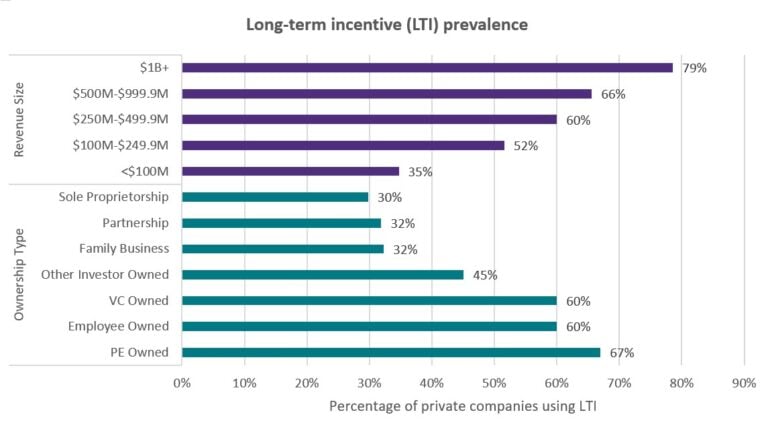
When David R. Lumley, one of two co-chief operating officers at Spectrum Brands, was promoted to CEO in 2010, the maker of Cutter Insect Repellent, Rayovac batteries and other consumer products eliminated the COO position. Now, the Madison, Wisconsin-based company is considering reviving the job.
At first, Lumley says, “We created a flatter organization,” saving $10 million to $20 million annually. Each business unit was run by a president, and shared services like finance, legal, human resources and information technology—which had been part of the COO portfolio—were consolidated under an upper-mid-level director who reports to the CFO.
During the intervening years, Spectrum more than doubled in size to $4.3 billion in sales from $2 billion. Now, Lumley has found himself spending roughly half his time doing operations-type work, such as overseeing his divisional managers. He would like to hand a lot of that effort off to another manager and thus have more time to focus on compensation, e-commerce, expansion, integrating last year’s $1.4 billion acquisition of Stanley Black & Decker’s hardware and home improvement group and other strategic issues.
If Spectrum does bring back the COO job, however—a decision that’s expected next year—Lumley says it should be assigned to a single person with a clearly defined focus. “The CEO and COO should be complementary,” he says. “I wouldn’t hire a clone.”
The chief operating officer position is probably the most amorphous in the C-suite. CEOs have historically defined the role according to their individual preferences and needs, as well as macroeconomic and industry pressures. Today, those pressures include globalization, the economy and technological change.
Because its purview is the entire company, the COO post is the most obvious stepping-stone to the top job; but for the same reason, its functions can be dispensed to other executives, and thus it is often the easiest to eliminate. According to the most recent Crist-Kolder Associates’ Volatility Report of America’s Leading Companies, the number of large companies with a COO has been steadily declining, from 47.4 percent in 2000 to 35.4 percent in 2012.
“The best way for the CEO to leverage the role is to have a well-defined job and set of rules,” says George L. Davis, co-managing partner of the global board practice of executive search firm Egon Zehnder.
For instance, it’s all well and good if CEOs want a No. 2 who can reliably fill in for them on business trips or at meetings. But first they must define just who will regularly attend which meetings. “If you willy-nilly go through days and months where sometimes the COO shows up and sometimes the CEO, it gets very confusing,” says Cindie Jamison, a senior partner at the New York-based executive search and consulting firm Tatum.
Tom Feeney, CEO of Safelite Group, a $1.1 billion vehicle glass and claims maintenance company based in Columbus, Ohio, divided the functions neatly when he promoted Steve Miggo to senior vice president of operations (the equivalent of COO) last year. Miggo has responsibility for the company’s auto-repair business, and Feeney oversees the other three business units. Among other benefits of that move, Feeney says he now spends less time traveling to the 500 retail stores.
At Southlake Regional Health Centre, a $350 million hospital in Ontario, Canada, the division between CEO Dave Williams, M.D., and COO Gary Ryan is different but equally clear-cut: Williams does the external outreach to universities, donors, other hospitals and government agencies, while Ryan runs day-to-day operations with internal managers. By delegating weekly manager meetings and other such in-house responsibilities “I’m freeing up a morning a week,” figures Dr. Williams—who is both an emergency physician and a former astronaut.
Some experts say that the chief operating officer’s job description has recently expanded beyond day-to-day operations into more strategic areas. In the past, these executives were involved only in short-term planning, says Brad Newman, Partner/Principal, Performance Improvement, Advisory Services at consulting firm EY (formerly Ernst & Young). “What we’re seeing now,” he adds, “is the COO being a louder voice at the table, as it relates to discussions of three-to-five-year horizons.”
Southlake COO Ryan, for instance, not only participated in the hospital’s review of its strategic plan, but he is now in charge of a wide-ranging project to partner with tech companies to develop new software programs.
Increasing the COO’s duties is particularly important if the CEO is specifically grooming this person as the heir apparent. According to a recent report by EY, The DNA of the COO, which analyzed two surveys of a total of more than 500 top executives, “Forty percent of COOs polled aspire to be promoted to CEO within the next five years.” That was a much higher percentage than for other C-suite colleagues. (The survey did not calculate how many COOs actually achieve this career goal; but according to the Crist-Kolder report, 46.7 percent of new CEOs were previously COOs, the majority promoted from within.)
While managerial experience is obviously important in a COO, more and more companies are looking at other criteria. One common strategy is to seek a chief operating officer with a background totally unlike that of the chief executive— someone who can fill in the blanks. A CEO who rose through the marketing ranks might want a COO with finance experience, for instance. “The skill sets are complementary but different,” says Dr. Williams of Southlake Regional.
At Safelite, Feeney chose Miggo to run operations because of his “people” skills: Miggo had been Safelite’s head of human resources for four years and held HR management positions at four other companies before that. “The COO must have an understanding of what motivates people, providing them [with] the [leader] who can create loyalty and trust,” explains Feeney.
One of Miggo’s first projects was to craft a “technician’s pledge” that, Feeney says, has inspired the staff and is now used in the company’s commercials. The pledge is: “Service so great, it’s memorable.”
Pat Patel, the CEO of Intelliswift, could probably use Miggo right now. Patel estimates that he is spending eight hours per week working with outside counsel to set up an employee stock-ownership plan (ESOP) for the nearly 500 staffers of his software development and systems integration company based in Fremont, California. “That is work that could be better handled by the operations person,” he says.
However, Intelliswift has no COO. Patel figures the company needs $50 million in revenue or 500 employees to justify that role, and it is only at $38.7 million now. He hopes to hit the milestone in six to 12 months, but he didn’t want to delay the ESOP.
Having a COO, Patel says, would mean that “I don’t get pulled into non-revenue-generating kinds of tasks that would take my focus away from the strategy that we have laid out.”
University of Tennessee, College of Business Administration
Executive MBA for Strategic Leadership
Targeted to “high-potential executives in—or moving into—senior-level positions.” The average attendee has 12 years of managerial experience, including international.
When: Four two-week residential programs, in mid-January, early May, early September and mid-December—plus 15 online sessions.
Location: Three of the residential sessions are at the University of Tennessee’s Knoxville campus; the fourth is overseas, varying each year.
Cost: $69,500.
Degree granted: MBA
Contact: Kate Atchley, Director, 865-974-6526, KateAtchley@utk.edu



0

1:00 - 5:00 pm
Over 70% of Executives Surveyed Agree: Many Strategic Planning Efforts Lack Systematic Approach Tips for Enhancing Your Strategic Planning Process
Executives expressed frustration with their current strategic planning process. Issues include:
Steve Rutan and Denise Harrison have put together an afternoon workshop that will provide the tools you need to address these concerns. They have worked with hundreds of executives to develop a systematic approach that will enable your team to make better decisions during strategic planning. Steve and Denise will walk you through exercises for prioritizing your lists and steps that will reset and reinvigorate your process. This will be a hands-on workshop that will enable you to think about your business as you use the tools that are being presented. If you are ready for a Strategic Planning tune-up, select this workshop in your registration form. The additional fee of $695 will be added to your total.

2:00 - 5:00 pm
Female leaders face the same issues all leaders do, but they often face additional challenges too. In this peer session, we will facilitate a discussion of best practices and how to overcome common barriers to help women leaders be more effective within and outside their organizations.
Limited space available.

10:30 - 5:00 pm
General’s Retreat at Hermitage Golf Course
Sponsored by UBS
General’s Retreat, built in 1986 with architect Gary Roger Baird, has been voted the “Best Golf Course in Nashville” and is a “must play” when visiting the Nashville, Tennessee area. With the beautiful setting along the Cumberland River, golfers of all capabilities will thoroughly enjoy the golf, scenery and hospitality.
The golf outing fee includes transportation to and from the hotel, greens/cart fees, use of practice facilities, and boxed lunch. The bus will leave the hotel at 10:30 am for a noon shotgun start and return to the hotel after the cocktail reception following the completion of the round.